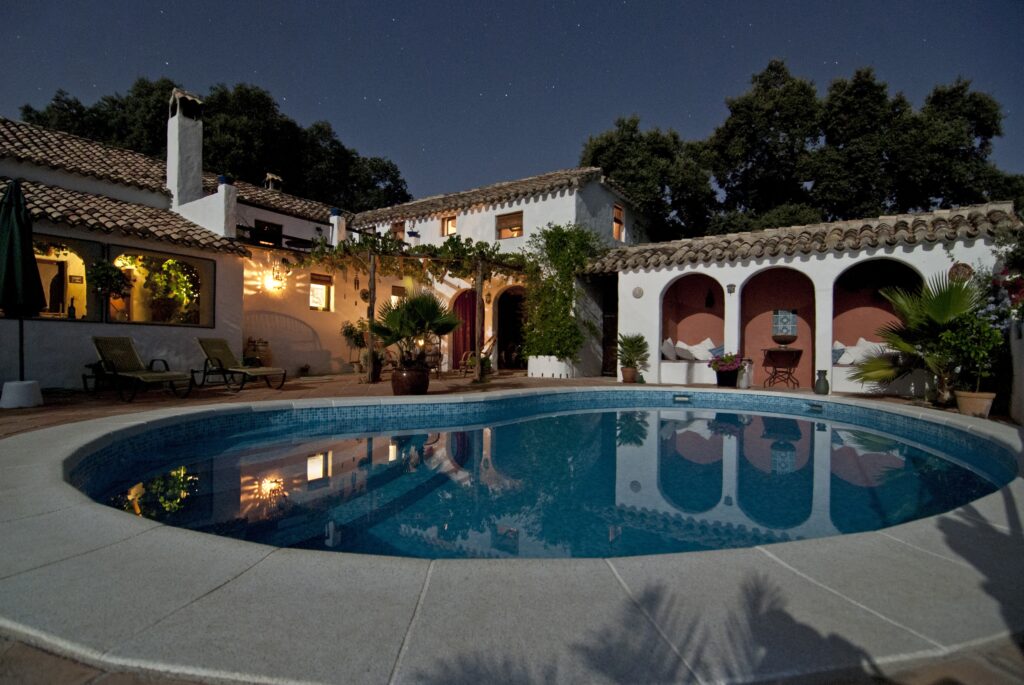I recently had the opportunity to explore the incredible world of tiny home design, and one aspect that truly caught my attention was the ingenious designs of tiny home bathrooms. These compact spaces prove that even in the smallest of areas, functionality and style can coexist harmoniously. From multifunctional fixtures to clever storage solutions, the art of designing efficient and stylish tiny home bathrooms is certainly a remarkable feat. Join me as I take you on a journey through the fascinating world of these miniature bathrooms, where every square inch is utilized efficiently without compromising on aesthetics.



This image is property of images.unsplash.com.
1. Determining the Layout
When designing a tiny home bathroom, it is essential to carefully consider the layout to make the most of the available space.
1.1 Analyzing the available space
The first step in determining the layout is to analyze the available space. Measure the dimensions of the bathroom area to understand the limitations and possibilities. By knowing the exact measurements, you can plan the placement of fixtures and storage solutions more efficiently.
1.2 Considering the plumbing and electricity
Next, it is crucial to take into account the plumbing and electricity requirements. Understanding the location of existing plumbing and electrical connections will help you determine the most practical layout for your bathroom. It is often easier and more cost-effective to work with the existing plumbing and electrical systems, rather than relocating them.
1.3 Identifying the essential bathroom fixtures
Identifying the essential bathroom fixtures is the key to an efficient tiny home bathroom design. Consider the items you absolutely need, such as a toilet, shower, and sink, and plan their placement accordingly. If space allows, you may also consider including additional fixtures, such as a bathtub or bidet, depending on your personal preferences. Remember, the goal is to maximize functionality while using the available space wisely.
2. Optimizing Storage Solutions
In a small bathroom, optimizing storage solutions is crucial to keep the space organized and clutter-free.
2.1 Utilizing vertical space
One effective way to maximize storage is by utilizing vertical space. Install tall cabinets or shelves that reach the ceiling to maximize the use of vertical space. This will provide ample storage for towels, toiletries, and other bathroom essentials without taking up precious floor space.
2.2 Incorporating built-in shelving
Another smart storage solution is incorporating built-in shelving. Consider installing recessed shelves in shower areas or above the toilet for storing bathing essentials and decorative items. Built-in shelving not only saves space but also adds a stylish and streamlined look to the bathroom.
2.3 Maximizing under-sink storage
Make the most of the space below the sink by using it for storage. Install a vanity or a cabinet with drawers to keep toiletries and cleaning supplies organized. Opt for a design that maximizes storage without compromising functionality. Consider utilizing space-saving features like pull-out drawers or built-in dividers to create a well-organized and clutter-free environment.



This image is property of images.unsplash.com.
3. Choosing Functional Fixtures
When designing a tiny home bathroom, it is essential to choose fixtures that are both functional and space-saving.
3.1 Selecting a space-saving toilet
A space-saving toilet is a must-have in a tiny home bathroom. Consider installing a wall-mounted toilet or a compact toilet with a smaller footprint. These options take up less floor space and create a more open and spacious feel in the bathroom. Additionally, dual-flush toilets are a great choice for conserving water, making them both practical and environmentally friendly.
3.2 Exploring compact shower options
Compact showers are essential for optimizing space in a tiny bathroom. Look for showers that are designed specifically for small spaces, such as corner showers or neo-angle showers. These styles are carefully designed to fit in small areas without sacrificing functionality. Consider using clear glass shower doors or curtains instead of opaque materials to create a sense of openness and maximize the perceived space in the bathroom.
3.3 Finding the right small sink design
Choosing the right small sink design is crucial for a tiny home bathroom. Consider opting for a pedestal sink or a wall-mounted sink to free up floor space. These designs provide a minimalist look while still offering functionality. Additionally, choose a small sink with built-in storage options, such as shelves or cabinets, to maximize storage in a compact area.
4. Enhancing Lighting and Ventilation
Proper lighting and ventilation are essential for making a small bathroom feel more spacious and welcoming.
4.1 Incorporating natural light
If possible, incorporate as much natural light as possible into the bathroom design. Install a skylight or large windows to bring in natural sunlight, which will make the space feel larger and more open. Natural light also helps to enhance the overall ambiance of the bathroom. If privacy is a concern, consider using frosted or textured glass.
4.2 Installing efficient lighting fixtures
In addition to natural light, installing efficient lighting fixtures is crucial for a tiny home bathroom. Choose LED lights or compact fluorescent bulbs as they are energy-efficient and provide bright and consistent lighting. Install fixtures strategically to eliminate shadows and evenly illuminate the entire space. Consider placing lights above the mirror, near the shower, and around the vanity area to ensure optimal visibility.
4.3 Considering a ventilation system
To prevent moisture buildup and keep the bathroom fresh, consider installing a ventilation system. Proper ventilation is especially important in compact spaces to prevent the accumulation of mold and mildew. Choose a ventilation fan with adjustable speed settings to cater to the size of your bathroom. The fan should effectively remove odors, excess humidity, and steam to maintain a comfortable environment.



This image is property of images.unsplash.com.
5. Selecting the Right Materials
Choosing the right materials is essential for a tiny home bathroom, where durability and moisture resistance are crucial considerations.
5.1 Choosing durable and moisture-resistant materials
In a bathroom, durability and moisture resistance are of utmost importance. Opt for materials that are specifically designed to withstand high levels of humidity and moisture, such as porcelain or ceramic tiles for the floor and walls. These materials are not only easy to clean but also provide long-lasting durability, ensuring that your bathroom will stand the test of time.
5.2 Opting for easy-to-clean surfaces
In a small bathroom, it is important to choose materials that are easy to clean and maintain. Consider using surfaces that are non-porous and resistant to stains, such as quartz or solid surface countertops. These materials are not only hygienic but also require minimal effort to keep them looking fresh and clean.
5.3 Exploring creative material combinations
While durability and ease of maintenance are essential, don’t be afraid to explore creative material combinations to add visual interest to your tiny bathroom. Consider incorporating contrasting textures and colors for an aesthetically pleasing look. For example, pair sleek and glossy tiles with natural stone accents to create a sophisticated and unique design.
6. Incorporating Space-Enhancing Design Techniques
In a small bathroom, clever design techniques can significantly enhance the perceived space and create a more open and welcoming atmosphere.
6.1 Using mirrors to create an illusion of space
Mirrors are one of the most effective ways to create an illusion of space in a small bathroom. Install a large mirror above the sink or across one entire wall to reflect light and visually expand the space. Mirrored cabinets or medicine cabinets not only provide storage but also amplify the sense of openness in the bathroom.
6.2 Implementing a glass shower enclosure
To maximize the perceived space in a tiny bathroom, consider implementing a glass shower enclosure. Glass allows light to pass through and creates a seamless visual flow, making the bathroom appear larger. Choose a frameless or semi-frameless design to eliminate visual obstructions and create a modern and elegant look.
6.3 Strategic use of colors and patterns
Applying the right colors and patterns can greatly impact the perceived size of a small bathroom. Opt for light and neutral colors, such as white, pastels, or soft grays, to create an airy and spacious feel. Consider using vertical or horizontal patterns to visually elongate the space. However, be careful not to overwhelm the bathroom with too many bold patterns, as this can make the space feel busy and crowded.
7. Ensuring Privacy
Privacy is a crucial consideration in any bathroom, regardless of its size. Here are some strategies to ensure privacy in a small bathroom.
7.1 Exploring various bathroom door options
When designing a tiny home bathroom, explore various door options that maximize space and privacy. Pocket doors or sliding doors are excellent choices as they do not require additional clearance for swinging like traditional hinged doors. Another option is to use frosted or textured glass doors that allow natural light to pass through while maintaining privacy.
7.2 Incorporating window treatments
To ensure privacy while still allowing natural light, consider incorporating window treatments. Options such as blinds, shades, or frosted window films are great for controlling light and privacy levels. Choose materials that are moisture-resistant and easy to clean.
7.3 Creative solutions for privacy in open layouts
In homes with open floor plans, creating privacy in the bathroom can be challenging. Consider using room dividers or screens to create a designated area for the bathroom without sacrificing the open concept. Utilize decorative elements such as plants or hanging curtains to add a sense of separation and privacy.
8. Considering Water Efficiency
In a tiny home, water efficiency is essential to conserve resources and minimize environmental impact. Here are some water-saving options to consider.
8.1 Installing water-saving fixtures
Choose water-saving fixtures for your tiny home bathroom to reduce water consumption. Look for faucets, showerheads, and toilets that are specifically designed to be water-efficient. These fixtures can significantly reduce water usage without compromising performance.
8.2 Considering a composting toilet
For those seeking a more sustainable option, consider installing a composting toilet. Composting toilets require minimal water or no water at all, as they use natural processes to break down waste into usable compost. Not only do composting toilets save water, but they also offer an eco-friendly solution for waste management.
8.3 Exploring greywater recycling systems
Greywater recycling systems are another water-saving option to consider in a tiny home bathroom. These systems collect and treat water from the shower, sink, and washing machine to be reused for toilet flushing or irrigation. By utilizing greywater, you can significantly reduce water consumption and contribute to a more sustainable lifestyle.
9. Incorporating Personal Style
Although designing a tiny home bathroom requires consideration of space limitations, it is still important to incorporate personal style and create a space that reflects your taste and personality.
9.1 Choosing the right color scheme
Select a color scheme that aligns with your personal style and evokes the desired ambiance in your tiny bathroom. Whether you prefer a calming spa-like atmosphere with soft blue hues or a modern and sophisticated look with a monochromatic palette, choose colors that resonate with you and create a space you enjoy spending time in.
9.2 Adding decorative elements
Adding decorative elements can infuse personality into your tiny bathroom. Consider incorporating plants, artwork, or decorative accessories that complement the overall design while adding visual interest. Choose elements that are appropriate for a bathroom environment and will not be easily damaged by moisture.
9.3 Creating a cohesive aesthetic
To create a cohesive aesthetic in your tiny bathroom, ensure that all design elements, such as fixtures, materials, and decorative elements, work harmoniously together. Choose finishes and materials that complement each other, and pay attention to the overall style and theme. A cohesive aesthetic will create a sense of unity and make your tiny bathroom feel well-designed and complete.
10. Addressing Accessibility and Universal Design
When designing a tiny home bathroom, it is important to consider accessibility and incorporate universal design principles to ensure that the space is usable for individuals of all abilities.
10.1 Making the bathroom accessible for all
Ensure that the bathroom layout allows for easy navigation and usability for individuals with mobility challenges. Plan for maneuverability by leaving enough space for a wheelchair or walker to freely move around the bathroom. Install grab bars in strategic locations to provide support and stability, and consider using lever-style handles instead of knobs for easier operation.
10.2 Considering grab bars and support rails
Incorporate grab bars and support rails throughout the bathroom to enhance accessibility and safety. These features provide stability and support for individuals with limited mobility or balance issues. Install grab bars near the toilet, shower, and bathtub areas to assist with sitting, standing, and maneuvering in and out of the bathing areas.
10.3 Ensuring maneuverability and safety
Finally, ensure that the bathroom design takes into account maneuverability and safety. Install slip-resistant flooring to prevent accidents, and avoid thresholds or elevated changes in flooring materials that may pose trip hazards. Choose faucets, shower controls, and other fixtures that are easy to operate and can be accessed from a seated or standing position. Additionally, ensure that the bathroom door is wide enough to accommodate individuals with mobility aids, such as wheelchairs or walkers.
Designing a tiny home bathroom requires thoughtful planning and consideration of several factors. By optimizing storage solutions, choosing functional fixtures, enhancing lighting and ventilation, selecting the right materials, incorporating space-enhancing design techniques, ensuring privacy, considering water efficiency, incorporating personal style, and addressing accessibility, you can create a functional and stylish bathroom in a limited space. With careful attention to detail and a friendly approach, your tiny home bathroom can be a welcoming and efficient space that reflects your personal style and meets your needs.
